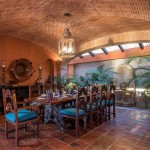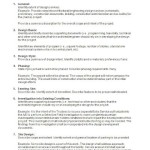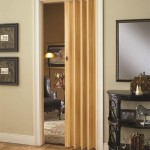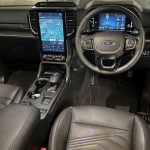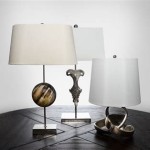Restaurant Interior Ideas: Creating an Immersive Dining Experience
The interior design of a restaurant plays a pivotal role in shaping the overall dining experience and impacting customer perception. Beyond simply providing a space for eating, a well-designed interior contributes significantly to brand identity, ambiance, and operational efficiency. From initial concept development to material selection and spatial arrangement, every element of the interior contributes to attracting patrons, encouraging repeat business, and ultimately, bolstering profitability.
The design process should begin with a thorough understanding of the restaurant's target audience, menu, and desired atmosphere. A fine-dining establishment, for instance, will require a vastly different approach compared to a casual bistro or a fast-food outlet. Considerations such as lighting, acoustics, furniture, color palettes, and even the layout of the dining area must be carefully curated to align with the restaurant's specific objectives. Furthermore, adherence to building codes, accessibility regulations, and hygiene standards are paramount throughout the design and construction phases.
Effective restaurant interior design is not merely about aesthetics; it's also about functionality. A well-planned layout optimizes workflow for staff, ensuring efficient service and minimizing bottlenecks. Comfortable seating arrangements encourage diners to linger and spend more, while strategic lighting can highlight architectural features and create a welcoming ambiance. The integration of technology, such as point-of-sale systems and digital menu boards, must also be seamlessly incorporated into the overall design.
Understanding the Importance of Theme and Concept
A cohesive theme or concept serves as the foundation for the entire restaurant interior design. This theme should resonate with the restaurant's brand, menu, and target market. Whether it's a rustic farmhouse, a modern minimalist space, or a themed environment like a tropical beach bar, the chosen theme should be consistently reflected in every aspect of the décor. This includes the color scheme, furniture style, artwork, and even the choice of materials.
The concept should be more than just superficial decoration. It should permeate the entire experience, influencing the menu presentation, staff uniforms, and even the background music. For example, a farm-to-table restaurant might emphasize natural materials, earthy tones, and rustic furniture to create a sense of authenticity and connection to the source of the ingredients. A modern sushi restaurant, on the other hand, might opt for clean lines, minimalist décor, and subtle lighting to reflect the precision and artistry of Japanese cuisine.
Careful consideration should be given to the longevity of the chosen theme. Trends in interior design can change rapidly, and a dated concept can quickly turn customers away. Opting for a timeless aesthetic or incorporating flexible design elements that can be easily updated is a prudent approach. The use of classic materials like wood, stone, and metal, combined with adaptable lighting and furniture, can provide a solid foundation that can be refreshed with minor adjustments as needed.
Furthermore, the restaurant's location can also influence the design concept. A restaurant situated in a historic building might choose to incorporate elements of the building's original architecture into the interior design, while a restaurant located in a vibrant urban area might embrace a more contemporary and edgy aesthetic. The key is to find a theme that is both authentic to the restaurant's brand and appropriate for its surroundings.
The Role of Lighting and Ambiance
Lighting is a crucial element in restaurant interior design, as it significantly impacts the ambiance and mood of the space. The type, intensity, and placement of lighting fixtures can dramatically alter the dining experience. A well-lit restaurant can feel inviting and energetic, while a dimly lit space can create a more intimate and romantic atmosphere. The key is to strike a balance between functionality and aesthetics, ensuring that the lighting provides adequate illumination for diners while also contributing to the overall design concept.
Different areas of the restaurant may require different types of lighting. For example, the entrance area might benefit from bright, welcoming lighting to create a positive first impression, while individual tables might be illuminated with softer, more focused lighting to create a sense of privacy and intimacy. Task lighting should be used in areas where staff need to perform specific tasks, such as food preparation or order taking. Accent lighting can be used to highlight architectural features, artwork, or other decorative elements.
The choice of lighting fixtures can also contribute to the overall design theme. Chandeliers can add a touch of elegance and sophistication to a fine-dining establishment, while pendant lights can create a more casual and contemporary atmosphere in a bistro or café. The use of dimmers allows for adjustable lighting levels, providing greater control over the ambiance and allowing the restaurant to adapt to different times of day or special events.
Beyond the physical lighting fixtures, the quality of the light itself is also important. Warm light tends to create a more inviting and comfortable atmosphere, while cool light can feel more sterile and clinical. The color rendering index (CRI) of the light source should also be considered, as it affects how accurately colors are perceived. A high CRI ensures that food looks appetizing and that colors appear vibrant and true to life.
Natural light should be maximized whenever possible, as it is widely considered to be the most flattering and appealing type of light. Large windows and skylights can bring in natural light and create a connection to the outdoors. However, it's important to consider the potential for glare and heat gain, and to implement measures such as blinds or shades to control the amount of sunlight entering the space.
Utilizing Furniture, Fixtures, and Materials for Desired Effect
The choice of furniture, fixtures, and materials is critical in conveying the restaurant's brand identity and creating a comfortable and functional dining environment. These elements should be carefully selected to complement the overall design theme and to meet the specific needs of the restaurant's target audience. Considerations such as durability, ease of maintenance, and aesthetic appeal should all be taken into account.
The type of furniture used in a restaurant can significantly impact the overall ambiance. Comfortable chairs and booths encourage diners to relax and linger, while uncomfortable seating can lead to shorter stays and lower spending. The style of the furniture should also be consistent with the restaurant's theme. For example, a rustic farmhouse restaurant might feature wooden tables, Windsor chairs, and vintage-inspired fixtures, while a modern minimalist restaurant might opt for sleek, geometric furniture made from metal and glass.
Tables should be sized appropriately for the restaurant's menu and target audience. Small tables are suitable for couples or solo diners, while larger tables are necessary for groups. The spacing between tables should also be carefully considered to ensure that diners have enough privacy and that staff can move freely throughout the dining area. A congested layout can create a sense of tension and discomfort, while a spacious layout can feel more luxurious and inviting.
The choice of materials can also contribute significantly to the overall design aesthetic. Natural materials like wood, stone, and metal can add warmth and texture to a space, while synthetic materials like laminate and vinyl are more durable and easy to clean. The use of sustainable materials is also becoming increasingly popular, as it demonstrates a commitment to environmental responsibility and can appeal to environmentally conscious diners.
Flooring is another important consideration. Hardwood floors can create a warm and inviting atmosphere, while tile floors are more durable and easier to clean. Carpet can absorb sound and create a more intimate environment, but it can also be more difficult to maintain. The choice of flooring should be based on the restaurant's specific needs and the overall design concept. Walls should also be considered, wallpaper, paint color and murals make the restaurants vibe better. All materials and fixtures must be compliant with safety and accessibility regulations.

21 Restaurant Interior Design Ideas For 2024 Touchbistro
21 Restaurant Interior Design Ideas For 2024 Touchbistro

Cafe Interior Design Ideas Low Cost Restaurant Decor Foodiv
21 Restaurant Interior Design Ideas For 2024 Touchbistro

Atmosphere Tv For Your Business 7 Creative Low Budget Small Restaurant Design Ideas

2024 Restaurant Design Awards Final Shortlist Interior

Designing Restaurants Mindfully Sansa Interiors

10 Tips For Designing Your Restaurant Interior Modern Management The Business Of Eating News

Restaurant Interior Design Ideas Using Panels Rulon International

Why Is The Restaurant Interior Important For Restaurants Success Woodfolds Best Designer In Ahmedabad

